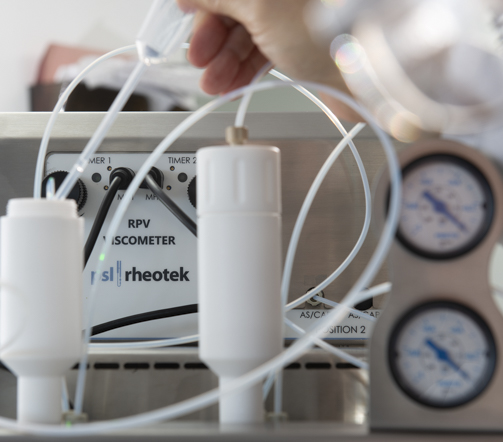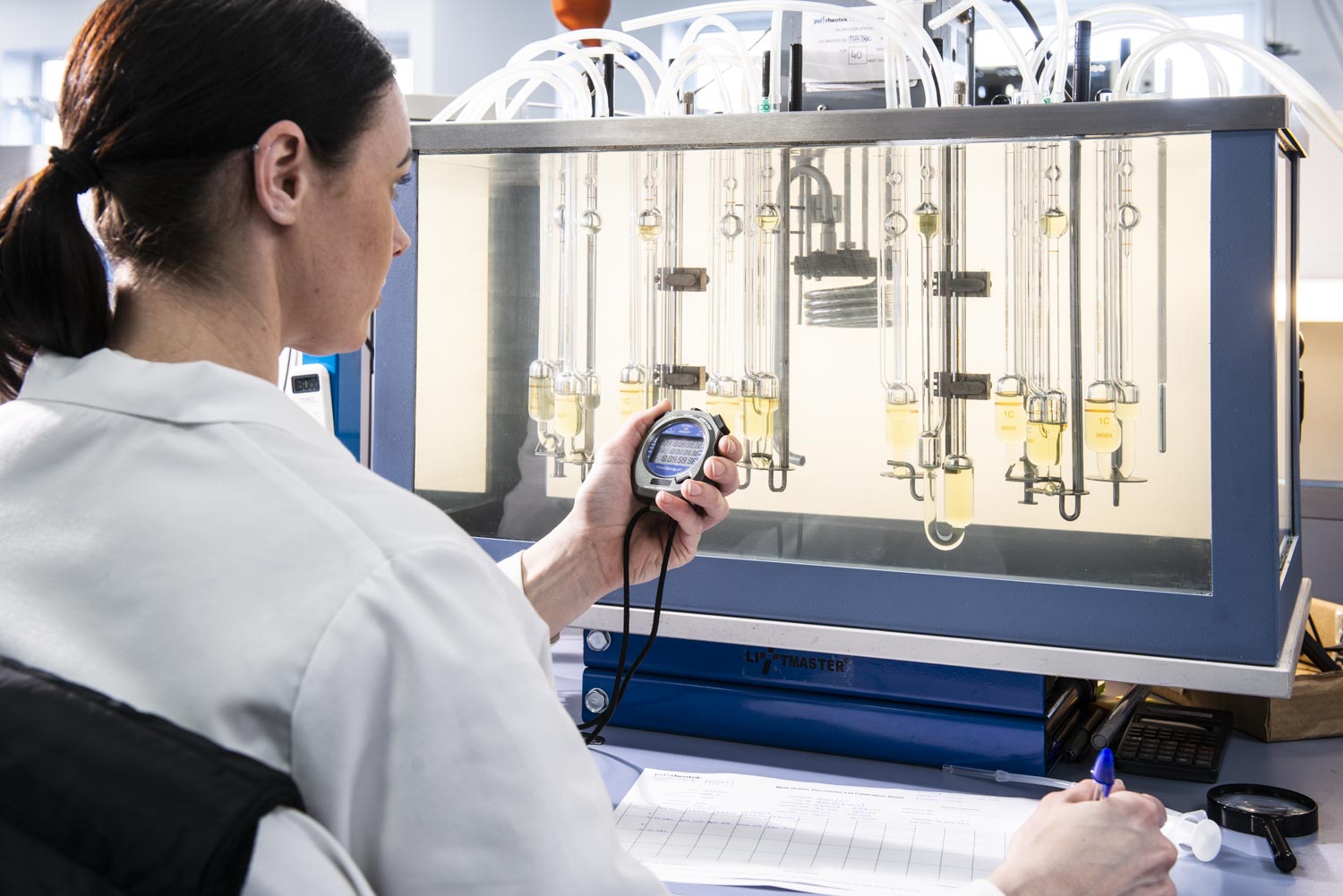Capillary Viscometry made simple
Viscosity is a measure of a fluid’s resistance to flow, and it is an important property in various industries such as petroleum, pharmaceuticals and food processing. The basic principle behind capillary viscometry involves measuring the time it takes for a fluid to flow through a narrow capillary tube under gravity or an applied force. Measuring Viscosity by this method is the main reference method across the world.
Minimum equipment needed
- A calibrated glass capillary tube
- A stopwatch
- A constant temperature viscometer bath
Measurement
- A small amount of fluid sample is placed in the capillary tube. Often this is done using a disposable pipette or a glass funnel.
- The sample is then allowed to flow through the capillary tube.
- The time it takes for the sample to flow through the capillary tube is recorded. This can be done using a stopwatch. It can also be done using an automated instrument.
Calculation
The viscosity of the fluid is calculated using the appropriate formula. The most common formula is flow time in seconds multiplied by the calibration constant of the specific glass viscometer used. Kinematic viscosity is reported in mm2/second or cSt.
Quality Assurance
One result is calculated as the average of two flow times, when measuring viscosity. The second flow time must agree with the first flow time within a tolerance band specified in the standard protocols. One of the most common protocols is ASTM D445. Other protocols widely used, when measuring viscosity are ISO 3104 & DIN 51562.
How long does it take to measure viscosity?
The typical time budget for a manual viscosity measurement in a glass capillary viscometer fitted in a holder and inserted in the constant temperature viscometer bath is just under one hour.
- Temperature equilibrium time 20 minues
- Flow times are usually 200 seconds+
- Removal of tube from bath and cleaning 5-10 minutes
- Total time needed 45-60 minutes per cycle
FAQ
You asked, we answered
Is this a reliable measurement?
Capillary viscometry is the most precise way of measuring viscosity.
How do I know, if the result is correct?
To validate the complete set up and the operating of it, we recommend to run a calibrated viscosity standard.
Do you have some instructions for use of a viscometer?
We have developed a number of “Quick guides” describing how to operate different types of glass viscometers. Please contact us on sales@psl-rheotek.com or reach out in our online chat to request the one, which is relevant to you.
Which viscometer do I need for my sample?
For measuring the viscosity of a transparent sample, the first choice is the ASTM Ubbelohde Viscometer. This is relatively easy to use and is available in a wide variety of sizes. For measuring the viscosity of an opaque sample, the BSU-Tube reverse flow or the Cannon-Fenske Opaque are the most commonly used.
What are the most common problems with measuring viscosity?
Achieving agreement between the two flow times can be challenging. This can be caused by poor temperature stability of the bath, poor cleaning of the viscometer tube or the use of low quality glass viscometers with uneven inner surfaces.
CUSTOM SOLUTIONS
Searching for custom instrumentation for your unique requirements?
Each PSL Rheotek viscometer system is configured for the owner! A wide variety of international test method protocols are readily available in the software and company specific method protocols are also supported.


